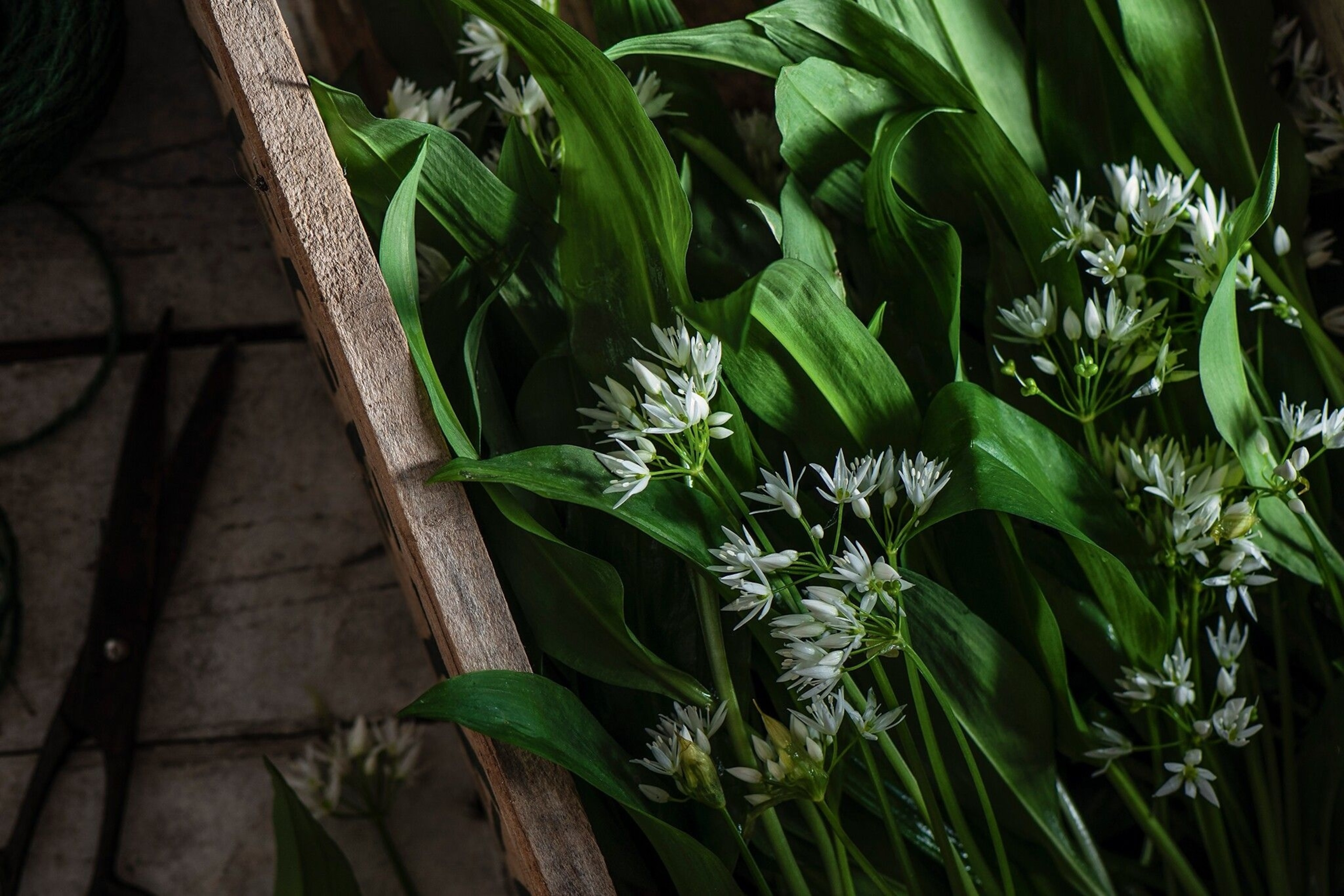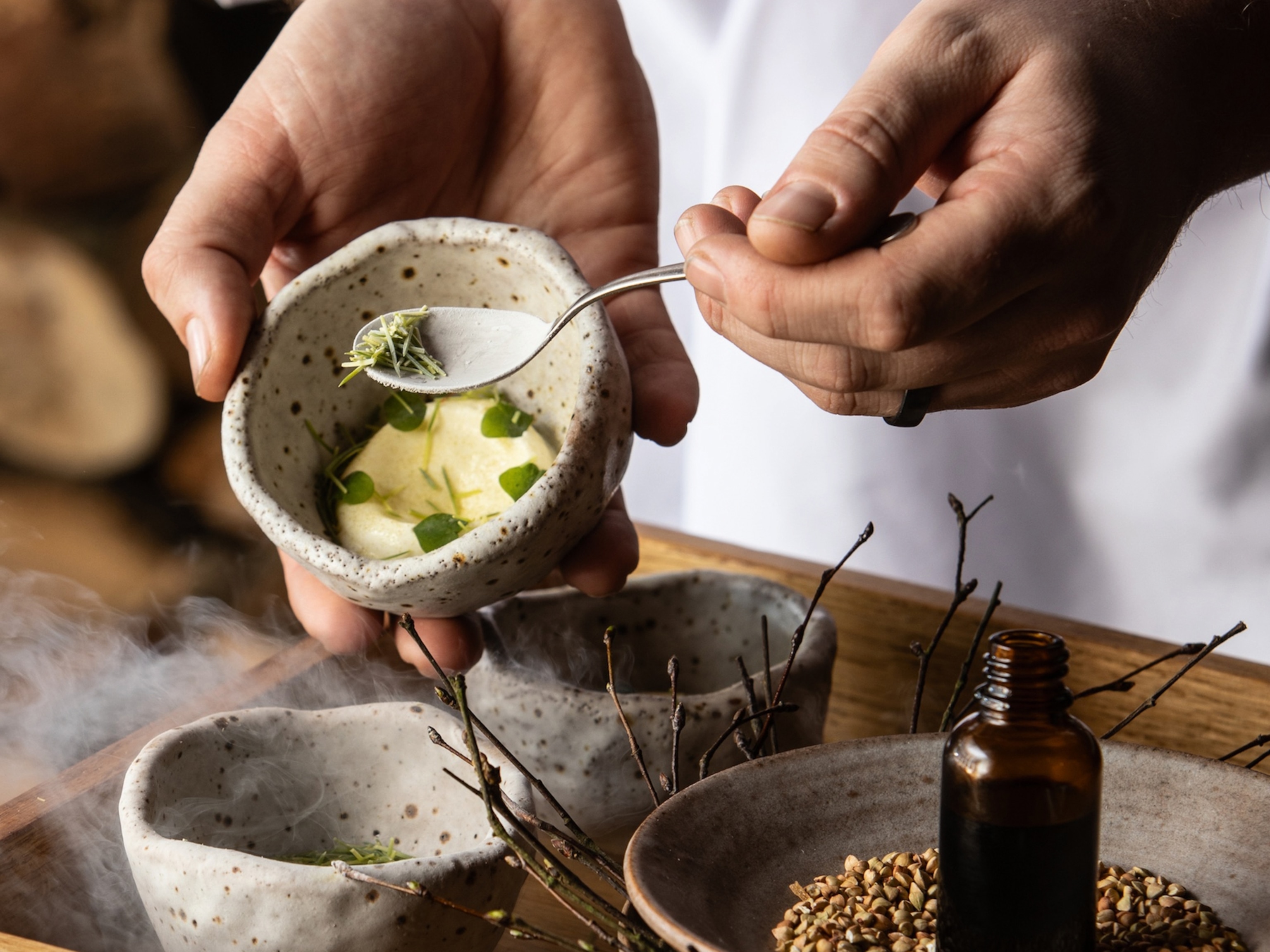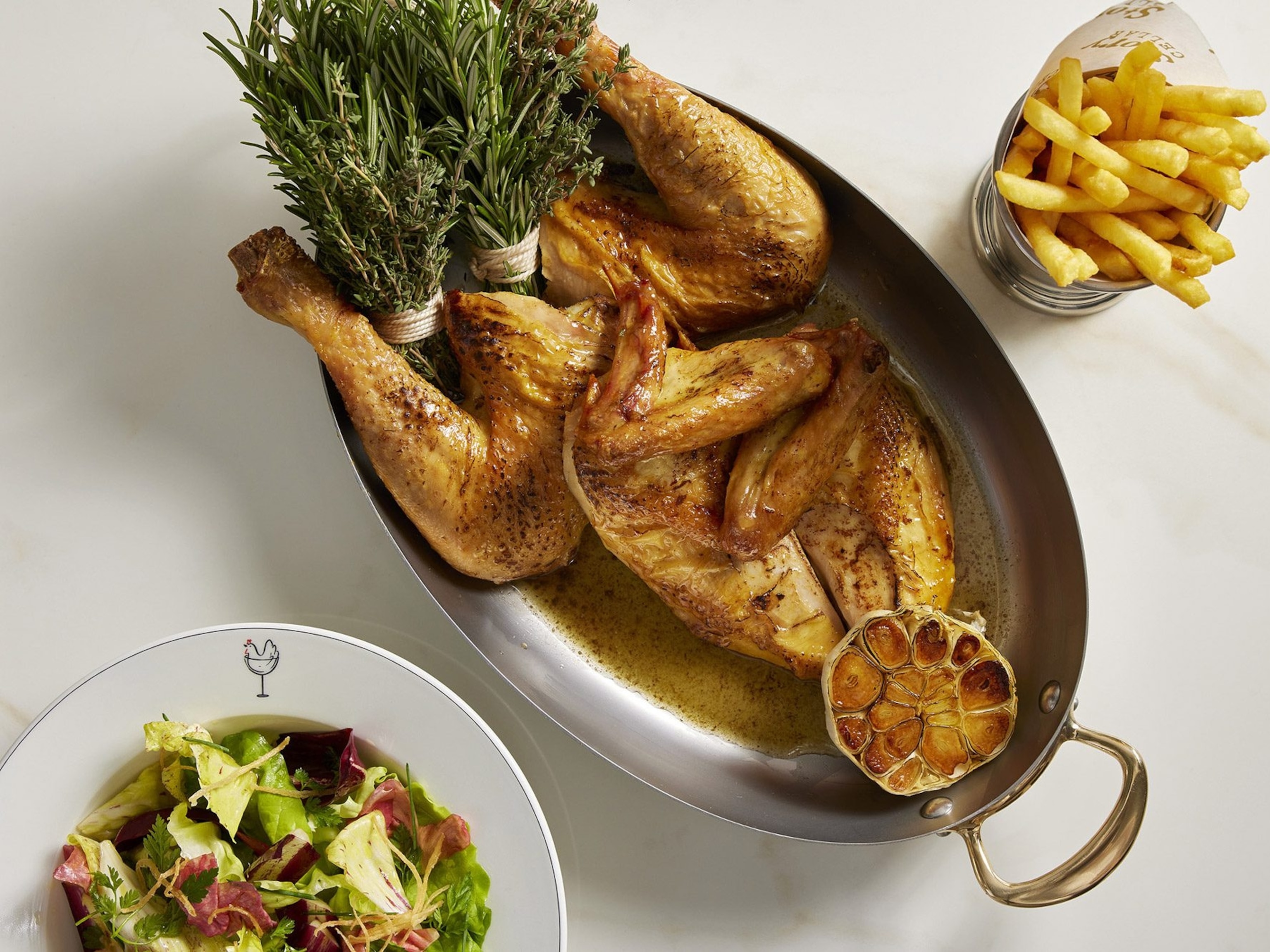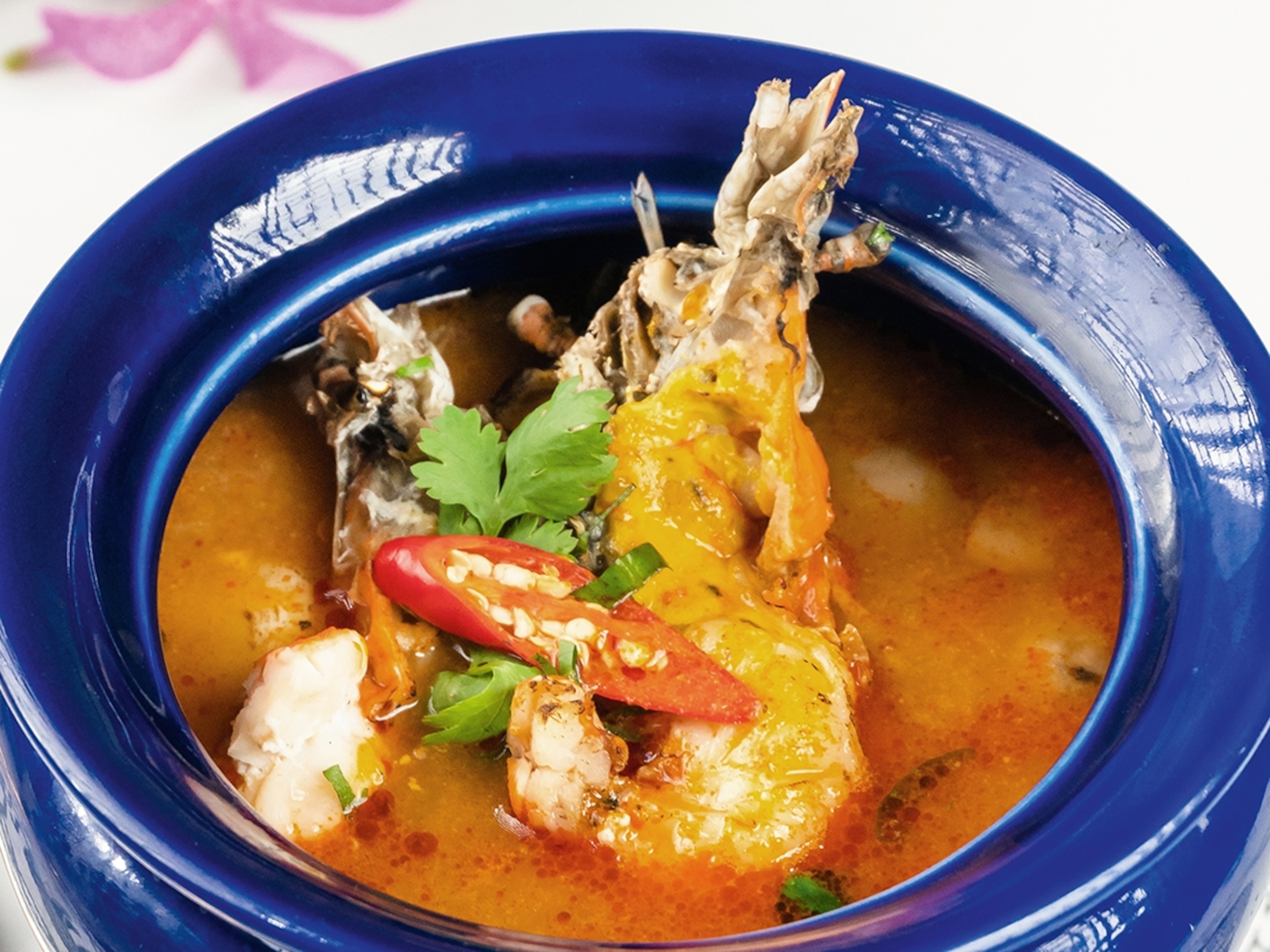5 ways to use wild garlic
A herald of spring, wild garlic adds flavour and colour to an array of dishes.

Spotting the first of the year’s wild garlic always fills me with joy — it’s a signal that spring is nigh and that there’s a glut of root vegetables just around the corner. I hadn’t tried wild garlic before I moved from New Zealand to the UK 18 years ago, but ever since first tasting it in the kitchen at the Savoy, I’ve been a fan.
Its fragrance and flavour is intense — like a hit of fresh garlic and chives, with grassy notes. It’s super versatile, and can be used in place of garlic, leeks or chives. Cooking it — as opposed to using it raw — does dial down the flavour somewhat, but you can add a small amount of white garlic to intensify it. It also imparts the most wonderful green colour to anything you add it to, brightening the dish.
Generally speaking, wild garlic grows in damp woodlands, and appears at slightly different times around the country. To identify it while out foraging, a gentle rub of the leaves will release the strong scent that confirms it is indeed wild garlic, rather than any other similar looking — and potentially poisonous — green leaf. Ensure you give it a good wash first, to remove anything untoward.
1. Butter
Blitz wild garlic leaves in a blender and fold through softened butter. Chill the mixture and use in a hollandaise sauce, in pasta, with fish or any number of other ways.
2. Soup
Instead of leek and potato soup, try using wild garlic with the potato instead. It adds a new layer of flavour and creates a vibrant green, warming bowl of deliciousness.
3. Mayonnaise
Blend oil with wild garlic leaves and whisk into shop-bought — or your own — mayo. Start off with egg yolks or aquafaba, whisk in olive oil and add the wild garlic oil when it emulsifies.
4. Salt
Remove the thin spines from the leaves then pop them on an oven rack, in a single layer, and dry them out at around 80C. Blend with salt and use the mix as a general seasoning.
5. Fermented
Pack lightly salted wild garlic leaves in a jar and cover with apple cider vinegar. Leave for at least a couple of days, then use in salads, with fish or in dressings.
Sign up to our newsletter and follow us on social media:
Facebook | Instagram | Twitter





